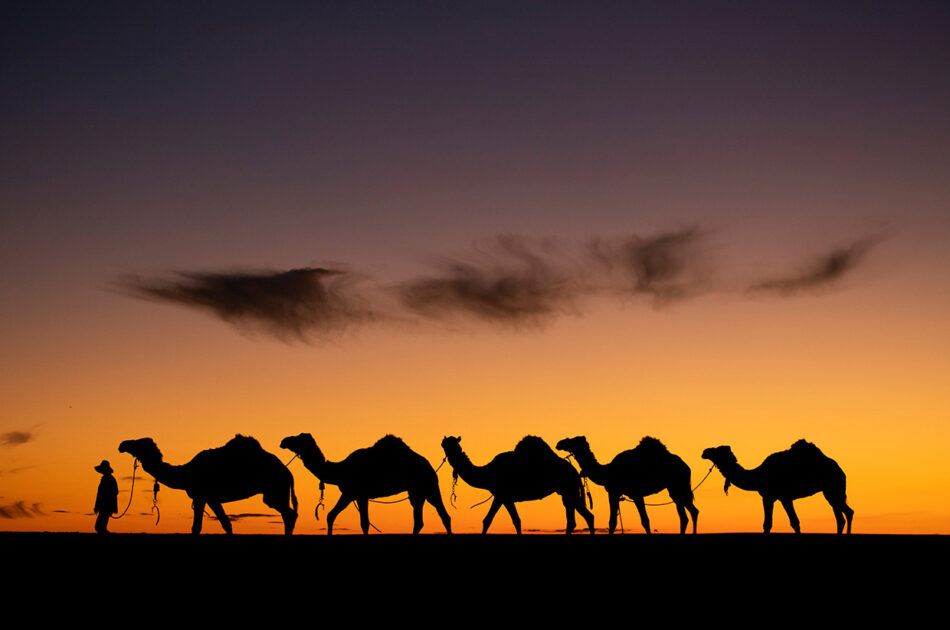Camels in the Quran: Biological Adaptation in Harsh Climates
Camels are often referred to as the “ships of the desert,” but their presence in the Quran signifies more than just their role in transportation. In Surah Al-Ghashiyah (88:17), Allah invites us to reflect: “Do they not look at the camels, how they are created?” This verse isn’t merely rhetorical—it encourages believers to ponder the wonders of creation. Camels, with their unmatched biological adaptations, embody divine wisdom, particularly in how they survive and thrive in the harshest environments. By merging Quranic insight with modern biology, we can truly appreciate the miracle that is the camel.
Quranic References to Camels
Mention in Surah Al-Ghashiyah
The most well-known verse mentioning camels is in Surah Al-Ghashiyah (88:17). This verse urges reflection on the camel’s structure, function, and creation as a sign of Allah’s artistry.
Symbol of Reflection
Camels are used symbolically to provoke thought and gratitude. The Quran uses them to direct attention toward Allah’s power and creativity in fashioning such a resilient creature.
Role in Prophetic History
Historically, camels were crucial to the livelihood of the Arabian people and featured in the stories of various prophets. The camel of Prophet Saleh (A.S), for instance, served as a test and a miracle for the people of Thamud.
Biological Design for Desert Life
Hump Functionality
The camel’s hump stores fat, not water. This fat reserve can be metabolized into energy and even water, aiding survival in arid regions.
Water Conservation
Camels can drink up to 40 gallons in one go and store it efficiently. Their red blood cells are oval-shaped, allowing smooth flow even during dehydration.
Temperature Regulation
Camels fluctuate their body temperature by up to 6°C to avoid sweating. This reduces water loss and aids in survival during both day and night extremes.
Unique Physiological Traits
Thick Eyelashes and Sealable Nostrils
To combat sandstorms, camels possess long, double-layered eyelashes and can close their nostrils to keep sand out.
Padded Feet
Their wide, padded feet act like snowshoes on sand, preventing them from sinking and enabling smoother travel.
Efficient Digestion
Camels are ruminants with a three-chambered stomach that enables them to extract every bit of moisture and nutrients from dry, thorny plants.
Behavioral Adaptations
Grazing Habits
Camels can eat dry, salty, and thorny vegetation that most animals avoid, ensuring survival even in barren lands.
Resting Posture
They sit with their legs tucked underneath to minimize surface area contact with the scorching sand, conserving energy.
Herd Behavior
Camels travel in herds, increasing safety and survival in open desert spaces.
Evolutionary Excellence in Harsh Terrains
-
They developed long legs to raise their bodies away from the hot ground.
-
Built-in sweat regulation system to minimize water loss.
-
Extremely tolerant to dehydration, can lose up to 25% of body weight in water without suffering.
-
A fur coat reflects sunlight and insulates during cold desert nights.
Ecological Significance of Camels
-
Camels help maintain the desert ecosystem by dispersing seeds.
-
Their droppings fertilize arid soil, supporting sparse vegetation.
-
Serve as a sustainable transport in conservation areas.
-
Provide milk and meat with a low environmental impact compared to cattle.
Human Dependence on Camels
-
It has been integral to Bedouin and nomadic lifestyles for centuries.
-
Source of nutritious milk even in drought conditions.
-
Used in trade caravans across the Sahara and Arabian deserts.
-
Still employed in remote areas for transportation and tourism.
Camels as a Sign of Divine Wisdom
-
Serve as living proof of Allah’s knowledge and design.
-
Reflect balance and harmony in creation—both strength and gentleness.
-
Inspire contemplation of survival, adaptability, and purpose.
-
Mentioned in the Quran as an invitation to reflect and be grateful.
Conclusion
The camel is not just an animal suited for the desert—it’s a living miracle of adaptation that echoes the precision of Allah’s creation. In the Quran, Allah doesn’t just describe the camel; He calls us to contemplate it, bridging spiritual wisdom and biological fact. At Muhammadan Quran School, we encourage such reflections through our online Quran classes for both children and adults, nurturing faith with understanding.







